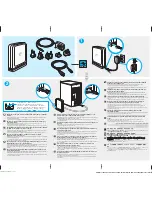Reviews:
No comments
Related manuals for Cabri Geometry II

PT-LW80NT
Brand: Panasonic Pages: 69

ISEEVIDEO
Brand: NAPCO Pages: 1

SmartWare R2.00
Brand: Inalp Networks Pages: 321

ADS INSTANT MUSIC
Brand: ADS Technologies Pages: 5

COLDFUSION 5-DEVELOPING
Brand: MACROMEDIA Pages: 438

NI Spectral Measurements Toolkit
Brand: National Instruments Pages: 35

PERFORMANCE MANAGEMENT FOR POWER SYSTEMS
Brand: IBM Pages: 12

CPSEE_TSP500
Brand: Avaya Pages: 216

Secure Perfect 6.1.1
Brand: GE Pages: 269

FreeAgent Desk 2TB
Brand: Seagate Pages: 2

RESCUE CD - FOR WINDOWS V 85.2
Brand: AVG Pages: 83

ANTI-VIRUS BUSINESS EDITION 2011 - REV 2011.01
Brand: AVG Pages: 128

Voyager Digital Media Player
Brand: BT Pages: 30

CREATIVE 4D EXPRESS MONOGRAM WIZARD
Brand: Pfaff Pages: 2

AURORA PLAYOUT 7
Brand: GRASS VALLEY Pages: 4

AURORA EDIT 7
Brand: GRASS VALLEY Pages: 4

RAPTOR 1000 - OPENWINDOWS FOR SOLARIS INSTALLATION-REFERENCE
Brand: Tech Source Pages: 68

One Stop Vocal Processing Plug-in Vocalstrip
Brand: Solid State Logic Pages: 21

















